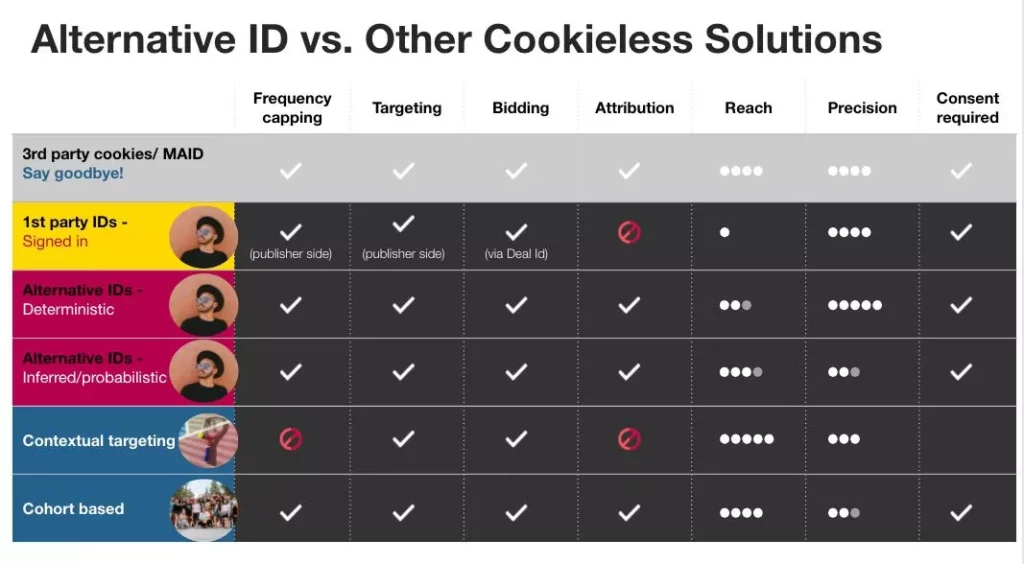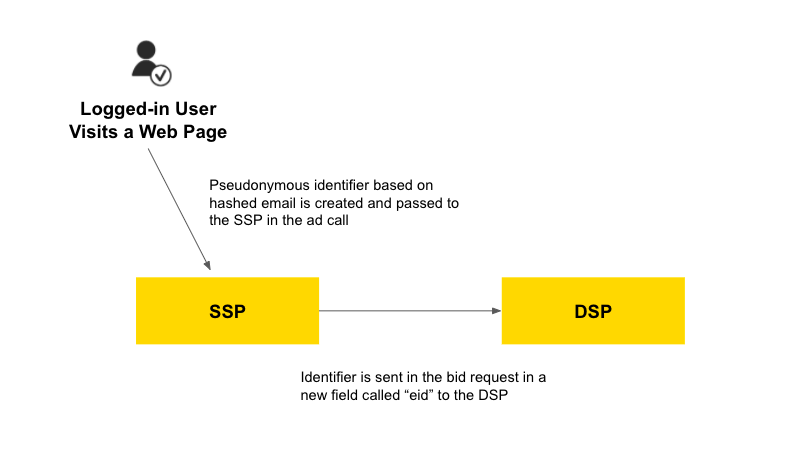User identification across the programmatic chain from supply to demand is critical to allow for targeting (audience targeting, retargeting, etc.), frequency capping, attribution measurement and other features.
Traditionally, user identification across the programmatic ecosystem is done by each player in the value chain dropping their own third-party cookie that includes a unique user ID and then synching with each other to receive its own ID.
Since user identification based on third-party cookies is going to disappear, new providers and initiatives have emerged to allow for shared user identification. Some examples include: ID5, LiveRamp’s IdentityLink, Lotame’s Panorama ID, and The Trade Desk’s Unified ID.
Two different methodologies are used by these ID providers to identify the user:
- Deterministic – The user is identified by a determinist identifier – a hashed email, a phone number, etc. This methodology helps to provide a very precise identification of the user and map them with offline data, like a CRM program, for example. But, it is limited in terms of reach, as it only works on an authenticated user base. This methodology is used by providers like LiveRamp or The Trade Desk.
- Probabilistic – The user is identified by some characteristics of their device – user agent, IP address, etc. This methodology provides an approximate identification – as multiple users can have the same characteristics – but significantly improves the coverage of identified users. It’s used by ID5 and Lotame, for example.

How User Identifiers Are Processed in the Programmatic Chain
Most of the programmatic ecosystem is based on IAB’s OpenRTB specifications. Versions 2.5 and 3.0 of this standard now include new objects called extended identifiers. They provide a common language for players in the value chain to pass the identifiers between the SSP and DSP.
These IDs are then used at the SSP or DSP level to deliver advertising use cases: matching against an audience segment based on this shared ID, deciding to cap the delivery of an ad for a given user, etc.
How User Identifiers Work
- Publishers integrate with one or multiple ID provider solutions and send the user identifiers they support in ad calls to the SSP
- The SSP forwards the user IDs to buyers
- The SSP can also offer functionalities based on user identifiers: reporting, audience targeting, etc.

What Programmatic Buyers Should Do
Alternative identifiers are an effective way to operate campaigns and measure effectiveness, just as buyers are currently doing with third-party cookies. Buyers should check with their DSP as to how they support those identifiers and monitor the scale they will be able to obtain now and in the future.
What Publishers Should Do
Publishers should work with one or multiple ID providers and implement them within the ad server and their SSP stack. To maximize reach and enable media buyers to target their audience, it will be necessary to implement several ID providers at the same time. To make a choice, we recommend studying the market share of each ID provider, especially those used most by the DSP buying the inventory. Publishers will also have to check with their ad stack to see if they support these ID identifiers in the bid requests to buyers.
How We Can Help
We are ID agnostic. We fully support third-party user IDs and can work with any publisher chosen by our customers on both the sell-side (ad server and SSP) and buy-side (ID sent to all compatible DSPs) as one of the solutions we are putting in place to operate efficiently in a cookieless future.
We also facilitate the implementation of the ID solution in the publisher stack through an identity hub, a module with a user-friendly interface which enables publishers to effortlessly manage and configure any ID partners.

Want to learn more about our identity solutions?

